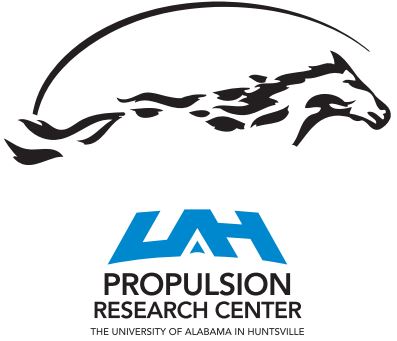Thermochemistry of Combustion in Polyvinyl Alcohol + Hydroxylammonium Nitrate
Source
UAH PRC Research Database
Document Type
Article
Publication Title
Aerospace
Abstract
A mixture of polyvinyl alcohol (PVA) and hydroxylammoniun nitrate (HAN) forms a gummy solid known as a plastisol, which is ionically conducting. When an electrostatic potential of 200 V DC is applied across the plastisol, it ignites. Combustion ceases upon removal of the applied voltage. The products of PVA + HAN combustion are known to include the molecular gases carbon monoxide, carbon dioxide, water, nitrogen, and hydrogen. When the electric field within the plastisol is spatially uniform, combustion occurs preferentially at the anode. The fact that HAN is an ionic conductor suggests that the mechanism of combustion is electrolytic in origin. Consistent with the preference for combustion at the anode and the known gaseous products, we consider two reaction mechanisms. One involves atomic oxygen as the oxidizing agent at the anode and hydroxyl radical as the oxidizing agent at the cathode. The other involves ozone as the oxidizing agent at the anode and hydrogen peroxide as the oxidizing agent at the cathode. Each mechanism is applied to a scenario where the products are rich in the carbon oxides and to a second scenario where the products are poor in the carbon oxides. In the rich case, the heat of the overall reaction is −808.33 kJ per mole of HAN consumed and the electrical energy is converted to thermal energy with an efficiency of 4.2%. In the poor case, the corresponding figures are −567 kJ per mole of HAN and efficiency is 2.9%. The combustion reactions at the electrodes are uniformly exothermic with the exception of the reaction involving hydrogen peroxide at the cathode. When the products are poor in the carbon oxides, this reaction is actually endothermic.
First Page
142
DOI
https://doi.org/10.3390/AEROSPACE8050142
Publication Date
5-20-2021
Recommended Citation
Baird, James K. and Frederick, Robert A. Jr., "Thermochemistry of Combustion in Polyvinyl Alcohol + Hydroxylammonium Nitrate" (2021). PRC-Affiliated Research. 60.
https://louis.uah.edu/prc-research/60


